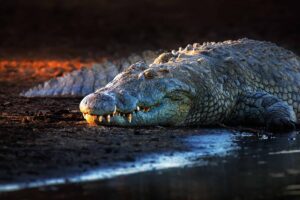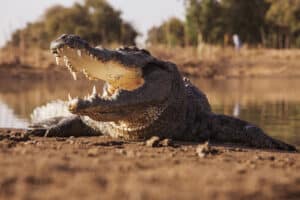Continue reading for our analysis...
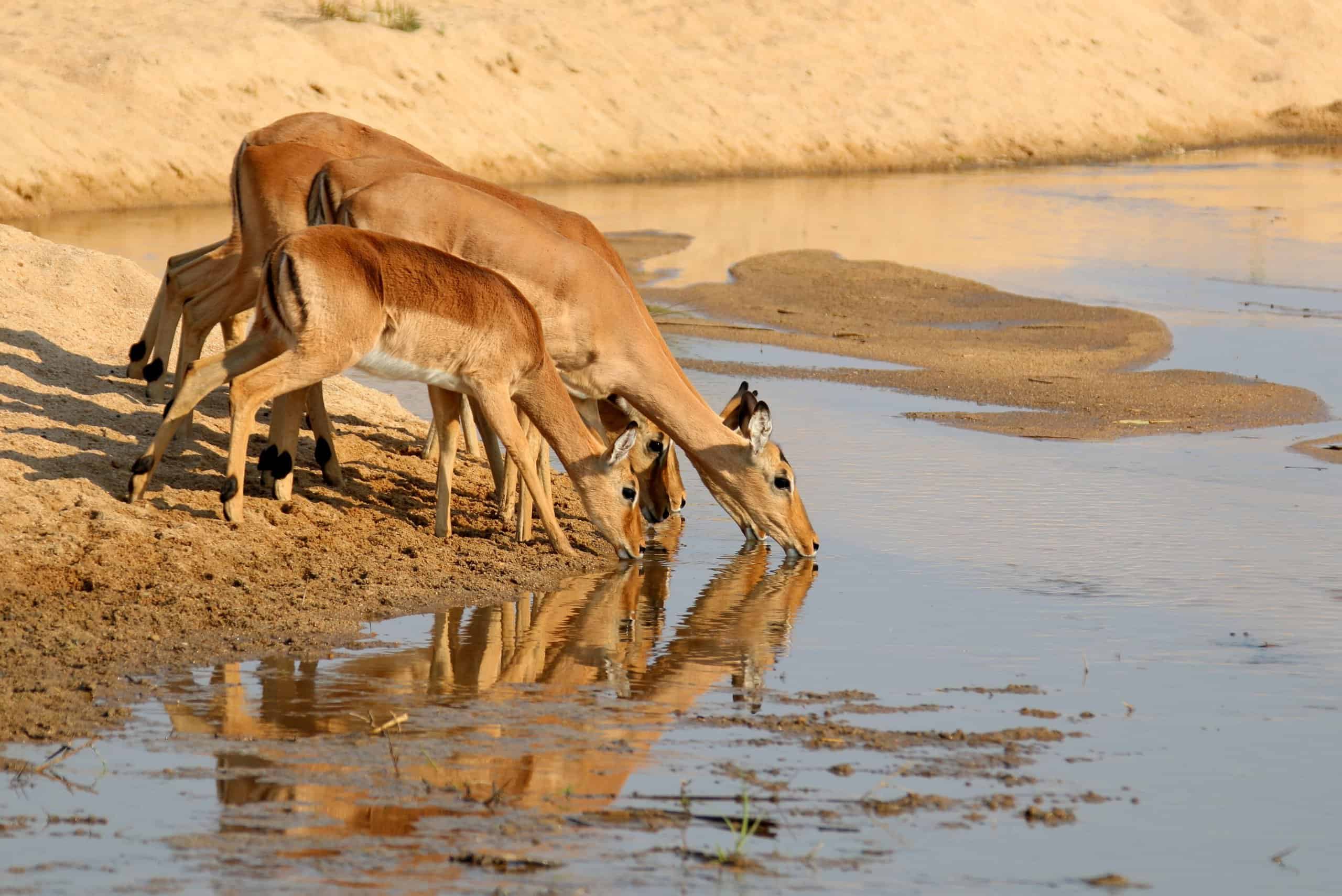
In the captivating video below, a herd of impalas cautiously gathers on a sandy-sloped beach, seeking refreshment from the water’s edge. Little do they know, lurking beneath the surface are crocodiles patiently lying in wait. The footage takes us through a series of three gripping attempts by the crocodiles to seize an impala.
The Third Time’s the Charm for this Crocodile!

Adult crocodiles can typically survive for several months without food, so this crocodile was willing to be patient. They have a slow metabolic rate, which allows them to efficiently utilize the energy stored in their bodies.
©diegooscar01/Shutterstock.com
The video seamlessly transitions between different clips, all captured at the same location, for brevity. The first two impalas showcase remarkable reflexes, narrowly evading the jaws of the crocodiles in heart-stopping pursuit. However, the tension escalates as the third attempt proves successful for the crocodile, snatching an unfortunate impala and dragging it beneath the water.
As the crocodile claims its prize, a curious hippo, disturbed by the commotion, approaches the scene. The inquisitive hippo investigates but ultimately decides to let the crocodile keep its catch, perhaps recognizing the natural order of the wild.
This riveting video exemplifies the delicate balance between survival and predation in the African wilderness. It serves as a testament to the agility and resilience of impalas in evading formidable predators while offering a glimpse into the dynamic interactions among diverse species in their shared ecosystem.
‘Jaws’ Should Have Been About Crocs – Their Bite is Much Stronger!
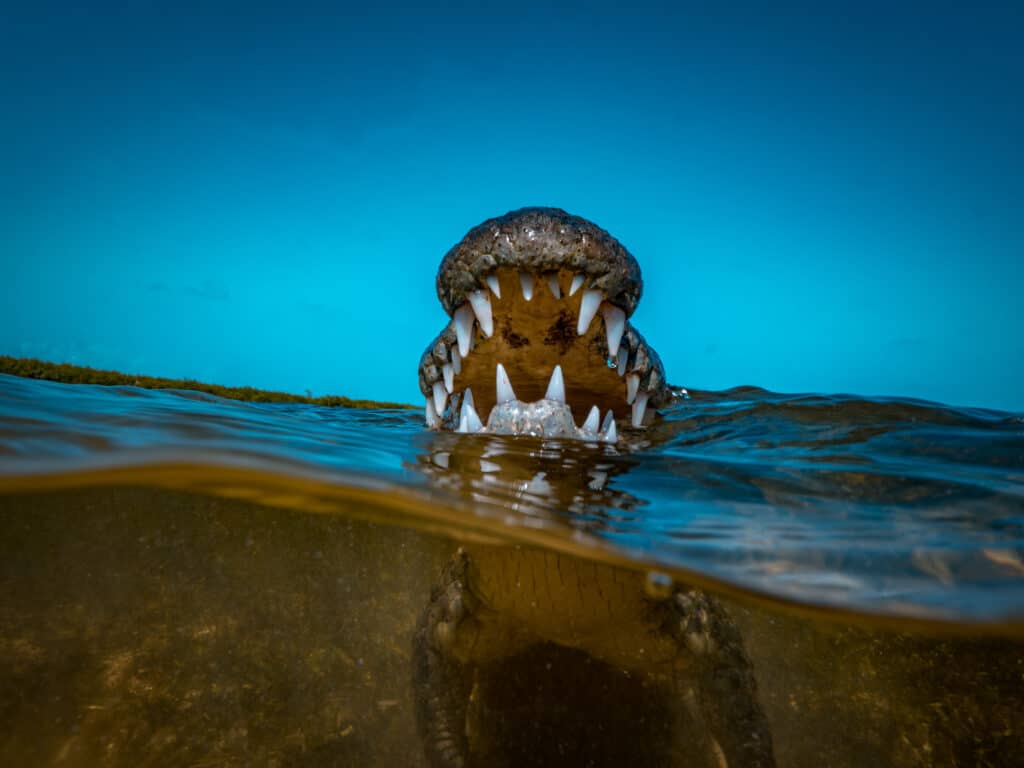
Crocodiles have specially designed jaws that allow them to exert immense pressure when biting down.
©Willyam Bradberry/Shutterstock.com
The bite strength of a crocodile is truly awe-inspiring.
These formidable reptiles possess one of the most powerful bites in the animal kingdom. Studies have estimated that the bite force of a large adult crocodile can exceed 3,700 pounds per square inch (psi), surpassing that of a great white shark. With interlocking teeth and strong muscles, crocodiles can deliver bone-crushing bites, allowing them to overpower and immobilize prey effortlessly.
As seen in the video below, these powerful jaws are far too strong for an Impala to fight against but are just as effective against stronger prey such as wildebeest or zebra. Their powerful jaws and ability to maintain a tight grip make them fearsome predators in both water and land.
How Large Do Crocodiles Get?

The largest ever crocodile was 22 feet long and weighed 2,200 pounds!
©Kelsey Fox/Shutterstock.com
Male crocodiles are much larger than females. Males often get up to 20 feet in length. Although, growing past 14 feet in the wild is fairly rare. Breeding females typically measure between 8 to 12 feet long. You can discern the American crocodile from the American alligator by its lighter skin and distinctive, narrower, triangular-shaped snout, and size.
The largest crocodile ever found was 22 feet long and weighed up to 2,200 pounds!
Dangerous but Necessary! It All Happens at the Watering Hole
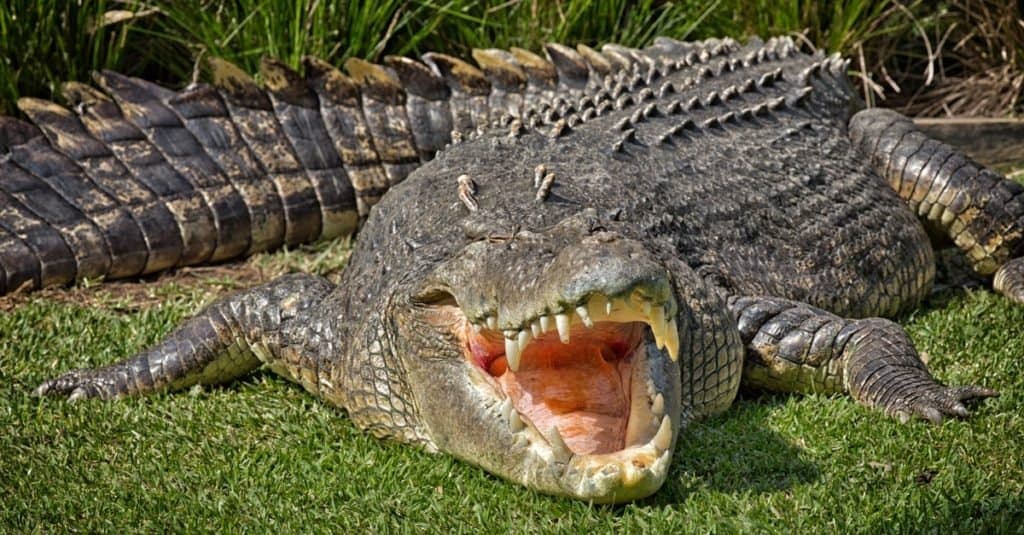
Crocodiles mainly hunt in watering holes in the African Savanna.
©PomInOz/Shutterstock.com
Watering holes in the African savanna, while essential for survival, can be treacherous grounds for prey animals. These coveted oases attract a multitude of thirsty creatures, creating a hotbed of potential danger. Predators, such as lions, leopards, and (in the case of the video below) crocodiles, patiently lie in wait, ready to seize their unsuspecting prey.
Stealthily concealed within the surrounding vegetation or lurking beneath the water’s surface, these predators capitalize on the vulnerability and desperation of animals seeking the oh-so-precious water. With their heightened senses and acute instincts, prey animals such as the impala in the video below must remain ever vigilant and on high alert.
The watering hole, paradoxically a life-giving source, becomes a place of constant tension and uncertainty, as survival teeters on the fine line between satiating thirst and falling victim to the predators that lurk in the shadows.
Do Nile Crocodiles Normally Eat Impalas?

In
Africa
, the Nile Crocodile has access to a wide variety of foods and is not picky about what it eats.
©diegooscar01/Shutterstock.com
The Nile crocodile is a large reptile that lives in freshwater habitats in Africa. This species is an apex predator and has a diverse diet, mostly consisting of fish, but they also feed on a variety of other animals. They are known to eat large mammals, such as antelopes and warthogs, as well as their smaller relative, the Impala.
In their natural habitat, Nile crocodiles primarily feed on fish, with a diet that includes all sorts of species, from catfish and tilapia to carp and eel. They also feed on a variety of invertebrates, such as freshwater mussels, snails, crabs, and crayfish.
Crocodiles also feed on amphibians, such as frogs and toads, as well as reptiles, such as turtles and snakes. Small mammals, such as mice and rats, are also part of their diet, and large mammals, such as antelopes and warthogs, are taken when available. While it is not common for Nile crocodiles to feed on Impalas, it is not unheard of.
When food is scarce, Nile crocodiles will scavenge for carrion and even eat plants. They will also eat eggs, including those of birds and turtles.
Overall, Nile crocodiles have a varied diet, including fish, invertebrates, amphibians, reptiles, mammals, carrion, and occasionally plants and eggs. While it is not common for them to feed on Impalas, it is not unheard of.
Thank you for reading! Have some feedback for us? Contact the AZ Animals editorial team.





